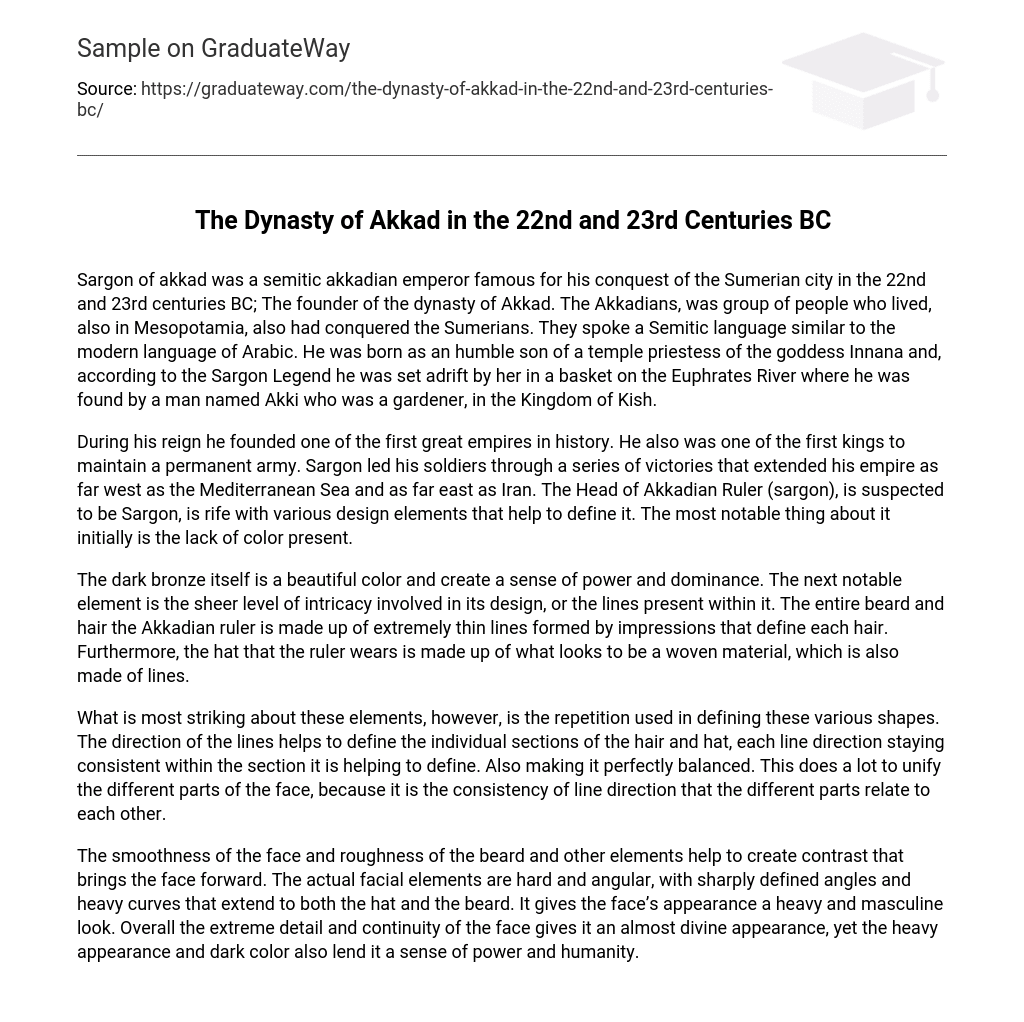Sargon of akkad was a semitic akkadian emperor famous for his conquest of the Sumerian city in the 22nd and 23rd centuries BC; The founder of the dynasty of Akkad. The Akkadians, was group of people who lived, also in Mesopotamia, also had conquered the Sumerians. They spoke a Semitic language similar to the modern language of Arabic. He was born as an humble son of a temple priestess of the goddess Innana and, according to the Sargon Legend he was set adrift by her in a basket on the Euphrates River where he was found by a man named Akki who was a gardener, in the Kingdom of Kish.
During his reign he founded one of the first great empires in history. He also was one of the first kings to maintain a permanent army. Sargon led his soldiers through a series of victories that extended his empire as far west as the Mediterranean Sea and as far east as Iran. The Head of Akkadian Ruler (sargon), is suspected to be Sargon, is rife with various design elements that help to define it. The most notable thing about it initially is the lack of color present.
The dark bronze itself is a beautiful color and create a sense of power and dominance. The next notable element is the sheer level of intricacy involved in its design, or the lines present within it. The entire beard and hair the Akkadian ruler is made up of extremely thin lines formed by impressions that define each hair. Furthermore, the hat that the ruler wears is made up of what looks to be a woven material, which is also made of lines.
What is most striking about these elements, however, is the repetition used in defining these various shapes. The direction of the lines helps to define the individual sections of the hair and hat, each line direction staying consistent within the section it is helping to define. Also making it perfectly balanced. This does a lot to unify the different parts of the face, because it is the consistency of line direction that the different parts relate to each other.
The smoothness of the face and roughness of the beard and other elements help to create contrast that brings the face forward. The actual facial elements are hard and angular, with sharply defined angles and heavy curves that extend to both the hat and the beard. It gives the face’s appearance a heavy and masculine look. Overall the extreme detail and continuity of the face gives it an almost divine appearance, yet the heavy appearance and dark color also lend it a sense of power and humanity.





